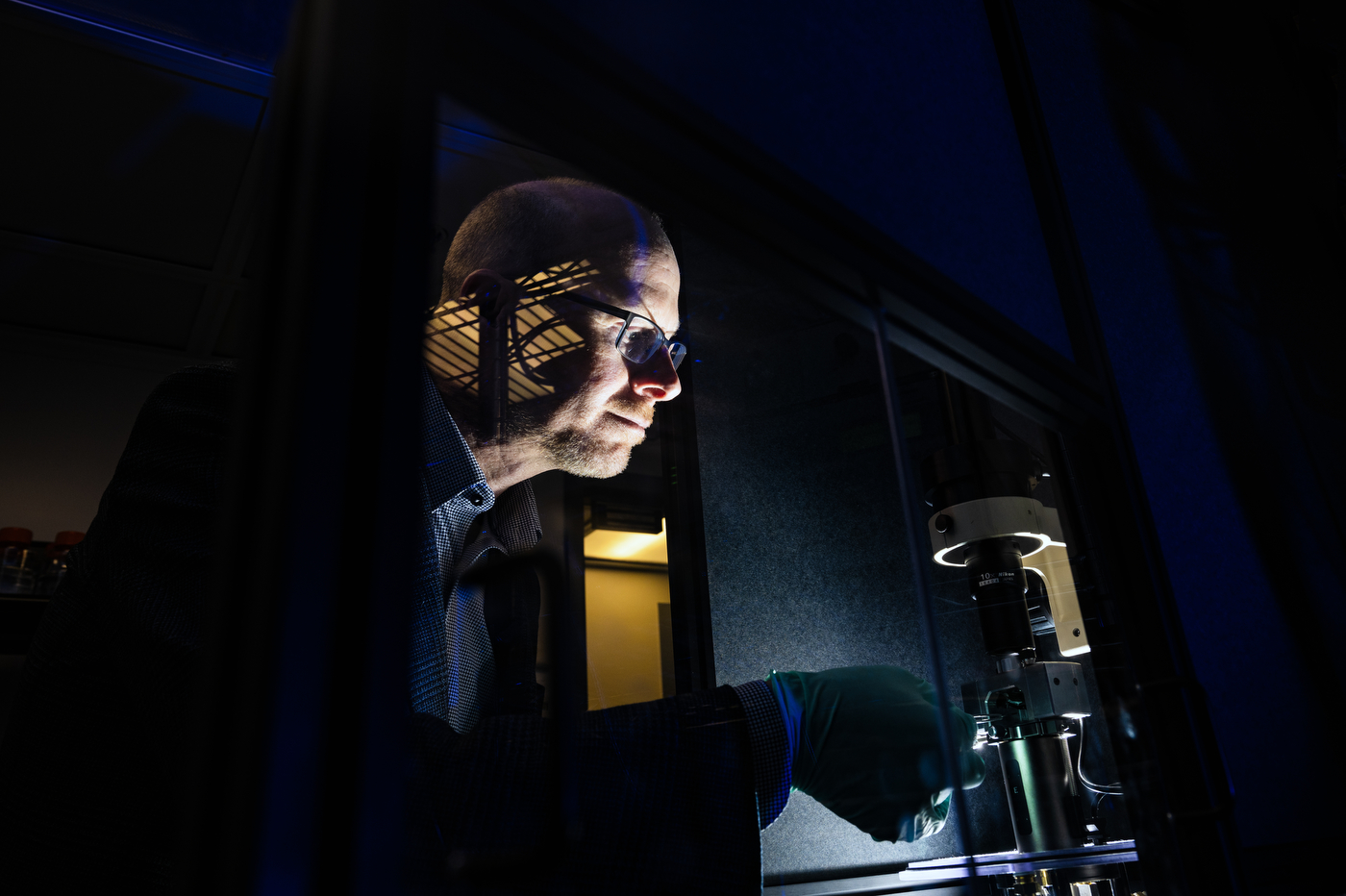Northeastern research on
HIV infection could lead to better
drugs to treat the virus
Northeastern physicists and National Cancer Institute researchers suggest that mechanical pressure triggers a key event in HIV infection.

It has been more than 40 years since the beginning of the HIV/AIDS epidemic and scientists still don’t fully understand how HIV enters and replicates in human cells, which has hindered the development of treatments.
New research by a team of physicists led by Northeastern University professor Mark Williams is working on a solution.
There is no cure for HIV, the virus that causes AIDS, but there are treatments that can reduce the amount of HIV in a patient’s body and get the virus under control.
Williams’ team recently confirmed a key mechanism in the infection of cells that could lead to better drugs.
“The goal of this research is to understand the [retroviral] lifecycle much better so that better drugs for HIV can be developed,” Williams says. “And this is a great part of the lifecycle to attack with drugs.”

The study, conducted by Williams’ team in collaboration with Vinay Pathak and research biologist Ryan Burdick in his lab at the National Cancer Institute, looked at the process of “uncoating” — when the viral DNA breaks out of the original HIV capsid shell that has entered a cell.
What triggered the uncoating process was previously unknown. It was believed, Williams says, that some viral or host factors launched that process.
The new research, published in the Science Advances journal, shows that uncoating could be a natural process of mechanical pressure building up and causing the protein shell that surrounds the HIV genome to break open, a theory first proposed by collaborator Ioulia Rouzina of Ohio State University.
One of the key findings of the study is that the viral DNA must be larger than a specific minimum size in order to create sufficient pressure on the shell. Ryan Burdick observed that viruses with too little DNA cannot uncoat and infect host cells while Northeastern research associate Michael Morse showed that viral nucleocapsid protein condenses the DNA to prevent premature uncoating.
Editor’s Picks
Understanding where and how the uncoating happens, Williams says, creates a possibility of trying to use drugs and affect the protein shell stability or the uncoating process itself.
“Because uncoating is essential for the infectivity,” he says.
HIV, or human immunodeficiency virus, is a retrovirus that causes AIDS.
As a retrovirus, HIV uses ribonucleic acid molecules, or RNA, as its genomic information carrier. This RNA converts into viral DNA that later integrates into the DNA of a host cell. The infected cell then produces more HIV retroviruses that infect other cells.
HIV is transmitted through direct contact with HIV-infected bodily fluids, such as blood, semen and vaginal fluids, or from a mother who has HIV to her child during pregnancy, labor and delivery or breastfeeding.
The virus enters a human cell as a cell-free cone-shaped viral core composed of a protein shell, called capsid.
The HIV core holds the viral genome — two copies of RNA; nucleocapsid protein, a viral protein that helps package the genome inside a closed cavity; and a few other proteins.
A viral DNA is generated by a reverse transcription of the viral RNA. Next, the newly synthesized viral DNA needs to break out of the protein shell.
Williams compares the viral RNA to a flexible string, while the viral DNA is like a stiff wire that exerts pressure on the protein shell. If the pressure created by the DNA breaks the shell too soon, the HIV genome will be released into the cytoplasm, the gelatinous liquid that fills the inside of the host cell, and destroyed by the immune system of the cell before getting to the cell nucleus that holds its DNA.
The scientists had to do a lot of experiments for the current study, he says, to figure out that nucleocapsid proteins bind not only to the viral DNA, but they also bind to the RNA once the conversion process has started.
“The RNA genome is still there when you create the DNA from that genome,” Williams says. “So you’ve increased the amount of DNA and RNA in the virus, and the fact that there’s not enough nucleocapsid protein in the capsid to condense all of the viral DNA and RNA is what seems to trigger the uncoating.”
This mechanism was pretty surprising, Williams says, but it does make physical sense.











